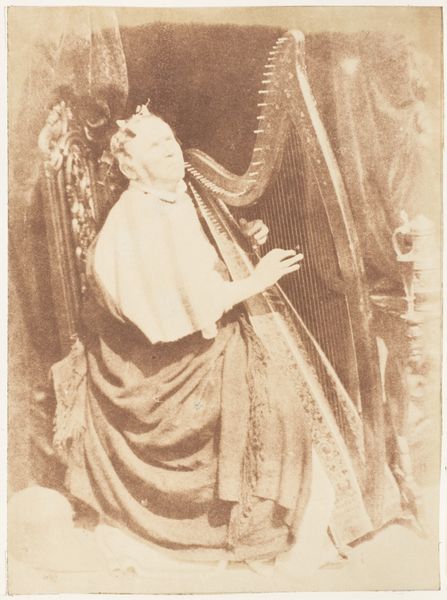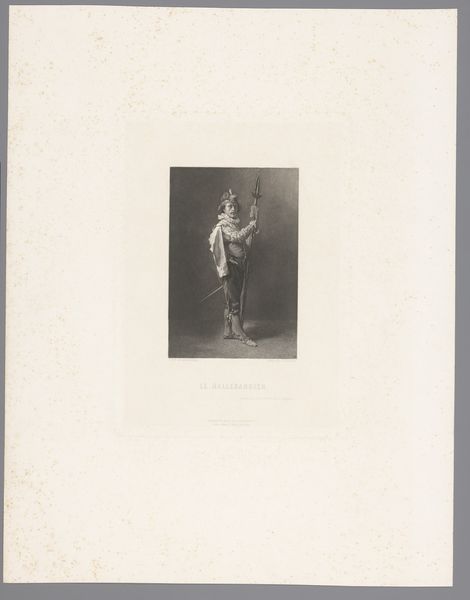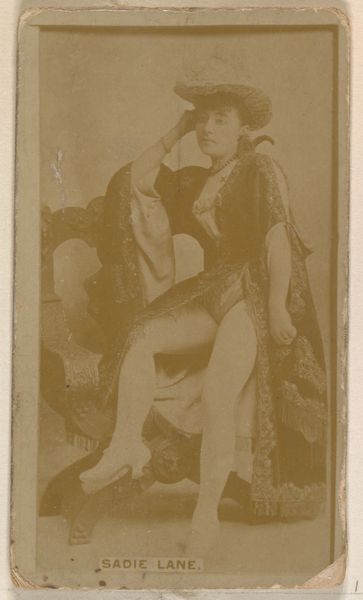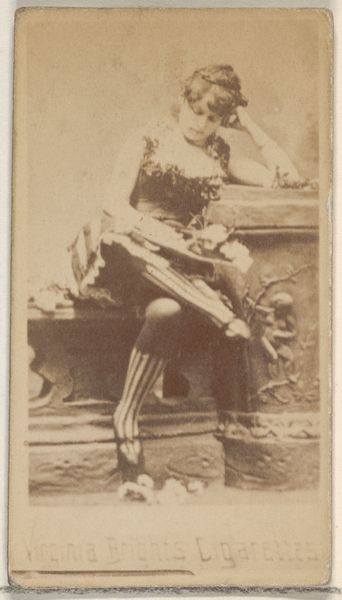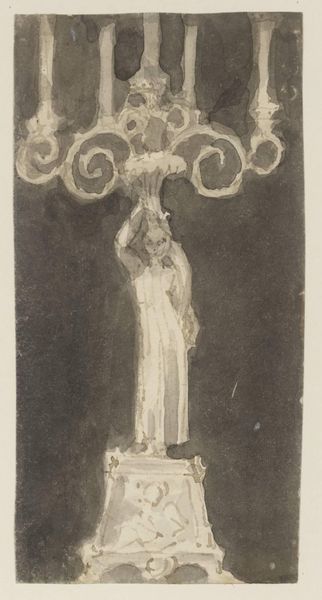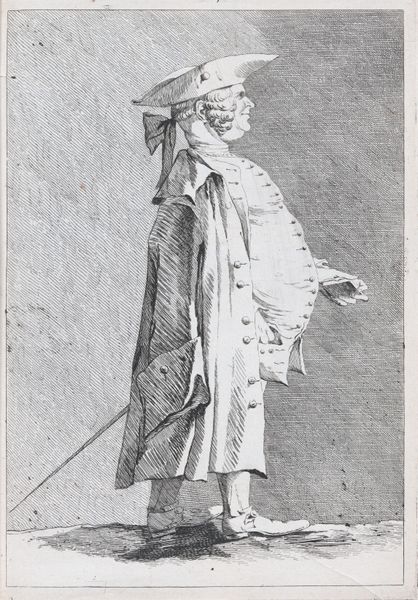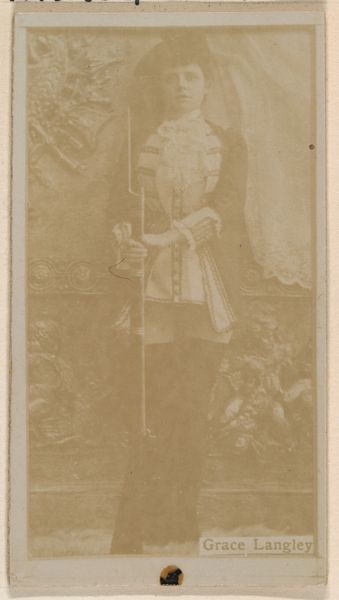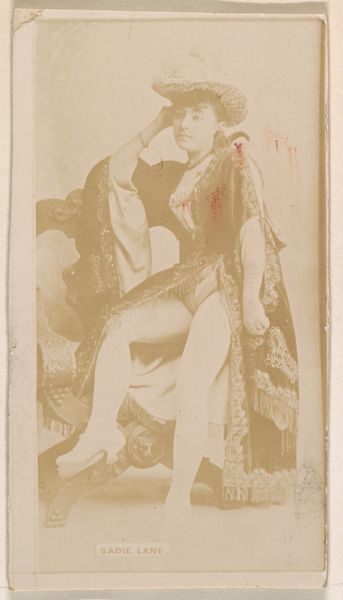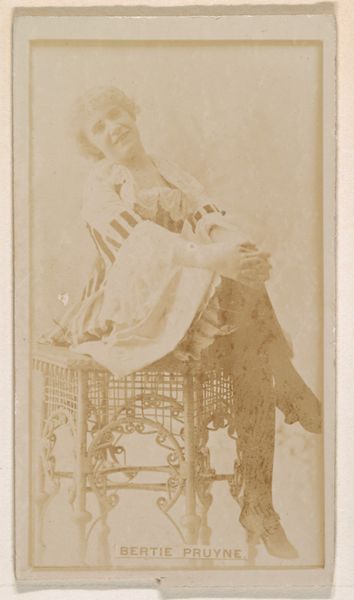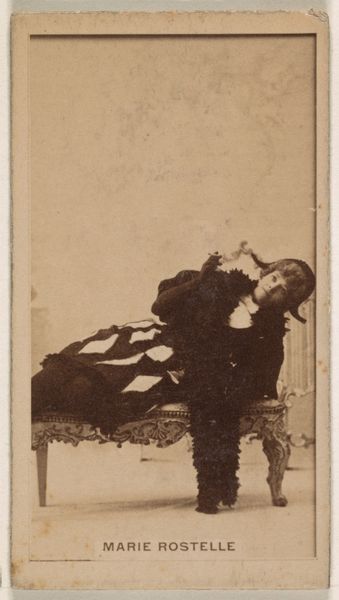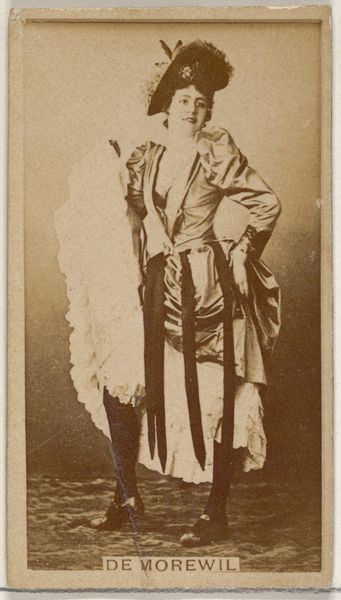
Post-mortemportret van Petrus Mathias Snickers (1816-1895), aartsbisschop van Utrecht 1895
0:00
0:00
photography, gelatin-silver-print
#
portrait
#
photography
#
gelatin-silver-print
#
19th century
#
islamic-art
#
realism
Dimensions: height 138 mm, width 98 mm, height 165 mm, width 108 mm
Copyright: Rijks Museum: Open Domain
Curator: This gelatin-silver print, taken in 1895, is titled "Post-mortem portret van Petrus Mathias Snickers (1816-1895), aartsbisschop van Utrecht," attributed to Jean Jacques Antoine van Winsen. It resides here at the Rijksmuseum. Editor: The immediate sensation is quite somber, naturally. The tonality of the silver print deepens this effect, along with the subject’s rigid pose and closed eyes. A severe contrast of light and shadow only underlines death's inevitability. Curator: Indeed, we are witnessing a cultural practice here. Post-mortem photography was relatively common in the 19th century. It was often the last opportunity for a family to have a portrait of the deceased, especially of children. Note the careful staging: the subject is seated in a chair, flanked by candles. It attempts to suggest the prelate is merely resting or in deep meditation. Editor: That detail is telling. While seemingly reverent, the composition offers an oddly jarring effect. The perpendicular lines created by the body bisect the gentle curves of the candlesticks, disrupting the pictorial field, don't you think? I feel unease observing the conflicting lines and shapes, producing a dynamic tension in my experience of the art. Curator: That tension mirrors, in part, the shifting attitudes of the time. While some clung to tradition and ritual in mourning, new technologies like photography began to alter those practices. Death became not only a spiritual event, but also a captured, recorded moment—a tension indeed. The church would need to accommodate modernity. Editor: To add to the disquiet, what semantically and stylistically might those slender, slightly wavering tapers symbolize within such a funerary presentation? Are we looking at fragility or rather eternity here? Curator: Those sorts of dichotomies became prevalent! As photographic techniques developed, we observe less obvious staging and a drift towards memorial photos outside religious institutions—indicating the secularisation of death’s rituals and memorializations. Editor: Well, the composition undeniably enhances the photograph's communicative effect. The formal rigor with the semiotic analysis adds such an impressive weight of contemplation. Curator: And I found our look at the work to be a helpful reminder that photography can often operate at the nexus of public history and private grief.
Comments
No comments
Be the first to comment and join the conversation on the ultimate creative platform.
